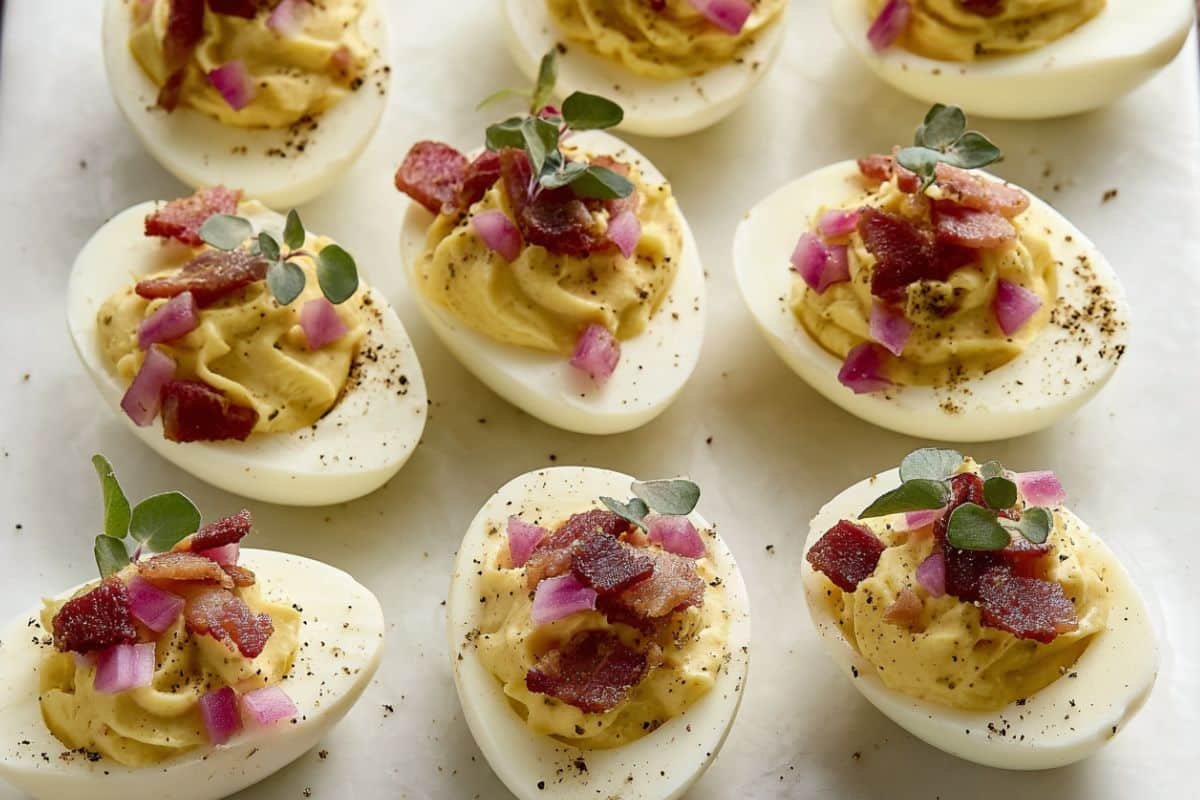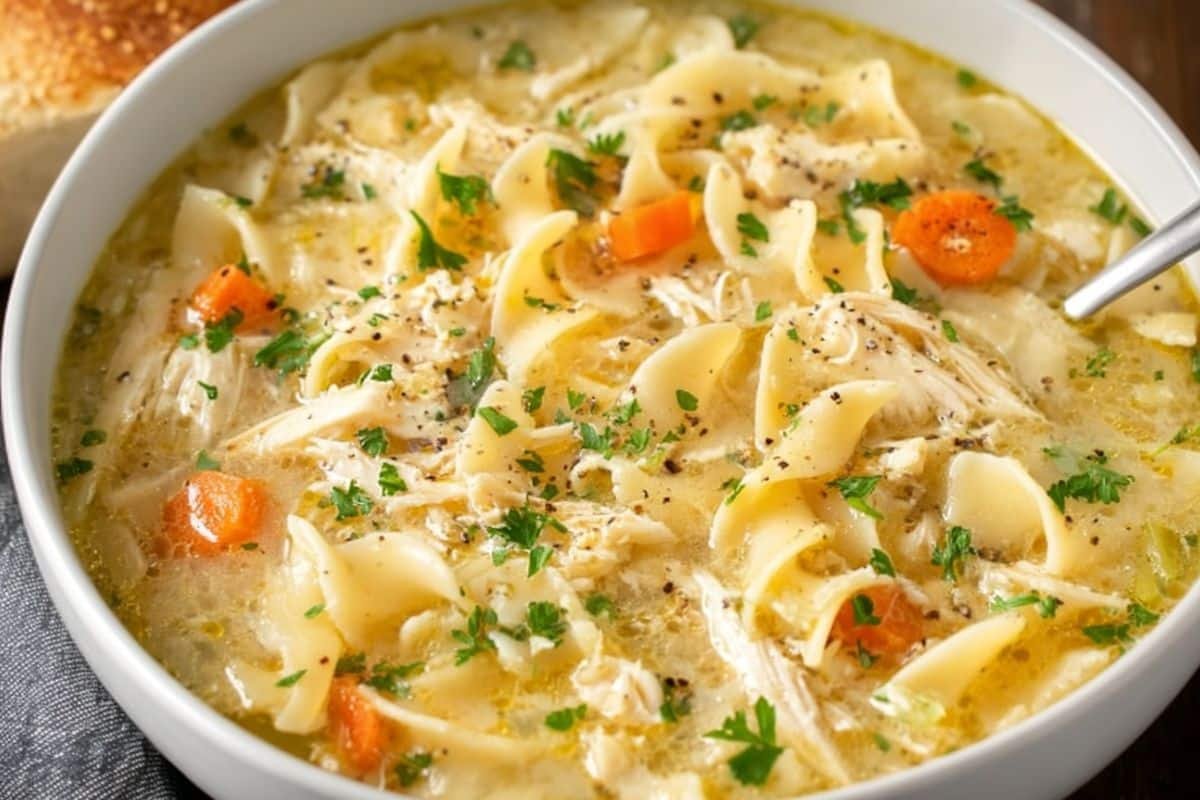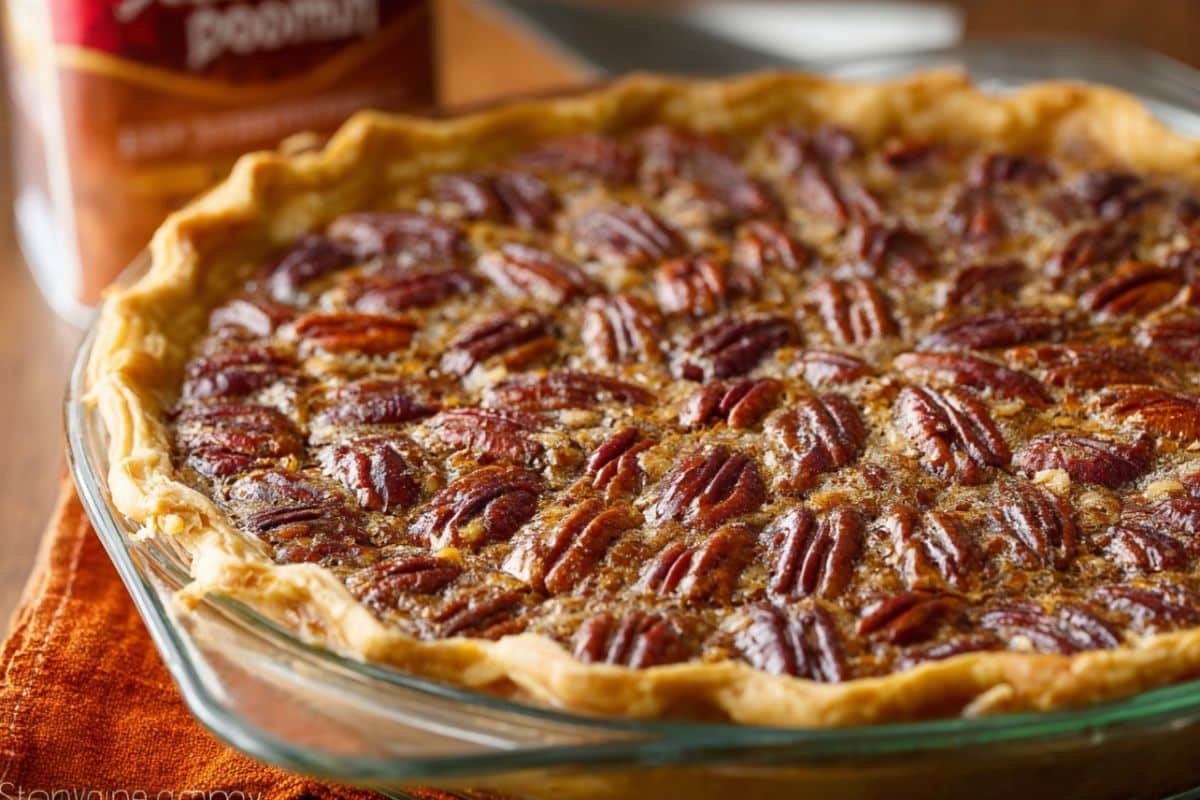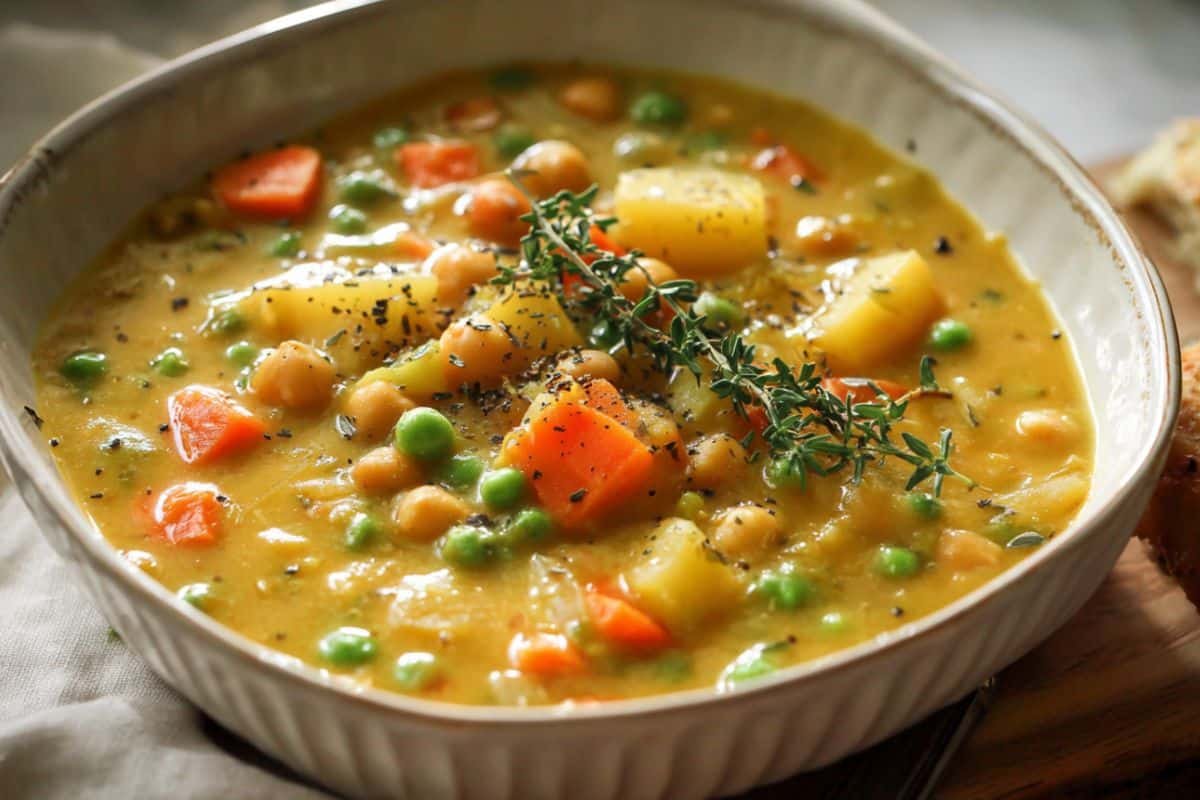Thanksgiving Deviled Eggs are the perfect holiday twist on a classic appetizer. With the rich flavors of sage, crispy bacon, and creamy yolk filling, these deviled eggs bring festive flair to your holiday table. Whether you’re hosting a full Thanksgiving gathering or simply adding a seasonal bite to your dinner, this recipe delivers both elegance and comfort in a bite-sized form. In this post, you’ll discover how easy it is to make these golden, savory treats—plus tips, variations, and storage advice to make your holiday prep smoother and your table more memorable.
Why You’ll Love This Recipe
Thanksgiving Deviled Eggs hit that sweet spot between tradition and creativity. They take a familiar favorite—the deviled egg—and elevate it with holiday aromatics like fresh sage and buttery shallot. The crisp bacon topping adds texture and smoky depth. Best of all, you can prep most of this recipe ahead of time, giving you more breathing room on the big day. Whether you want to dazzle guests or simply enjoy a refined snack, this recipe delivers flavor, ease, and festive appeal.
Ingredients
Here are the ingredients you’ll need:
- 12 large eggs
- 1 tablespoon unsalted butter
- 1 small shallot, minced
- 1½ tablespoons chopped fresh sage leaves
- 4 slices bacon
- ⅓ cup mayonnaise
- 1 tablespoon Dijon mustard
- ½ teaspoon kosher salt, plus more as needed
- Freshly ground black pepper
Note: you could also add a pinch of smoked paprika or a bit of chive garnish if you like.
Step-by-Step: How to Make Thanksgiving Deviled Eggs
1. Cook the eggs
Place all 12 eggs in a saucepan. Pour in cool water to cover the eggs by about 1–2 inches. Bring the pan to a boil over high heat. Once the water is boiling, remove the saucepan from heat, cover it with a lid, and let the eggs stand in the hot water (undisturbed) for 10 minutes.
2. Prepare the aromatics and bacon
While the eggs sit, melt the tablespoon of unsalted butter in a medium skillet over medium heat. Add the minced shallot and the chopped fresh sage; sauté for about 3 to 4 minutes, until the shallot is softened and the aroma of sage is released. Transfer this mixture to a small bowl and set aside.
In the same skillet, cook the 4 bacon slices over medium heat, flipping once, until they are browned and crisp (about 5–6 minutes). Transfer cooked bacon to a paper towel–lined plate to drain and cool. Once cooled, crumble or chop into small pieces.
3. Cool, peel, and halve the eggs
After the 10 minutes in hot water, remove the eggs with a slotted spoon and immediately plunge them into ice water (or very cold water) for at least 1 minute. This helps stop cooking and makes peeling easier. Peel each egg, then slice lengthwise into halves.
4. Separate yolks and mash filling
Carefully pop out the yolks and place them in a medium bowl; place the egg white halves, cut side up, on your serving platter. Mash the yolks thoroughly with a fork until finely crumbled.
Into the mashed yolks, add the mayonnaise and Dijon mustard. Stir or mash until smooth and creamy. Then stir in the reserved shallot-sage mixture, ½ teaspoon kosher salt, and a few grinds of freshly ground black pepper. Taste the mixture and adjust salt or pepper as needed.
5. Fill the whites
Spoon or pipe the yolk mixture into each egg white’s hollow. To pipe, transfer the filling to a reusable piping bag or a zip-top plastic bag, snip off one corner, and squeeze filling into each egg. Fill so the filling mounds slightly above the white.
6. Garnish and serve
Sprinkle crumbled bacon over the top of each deviled egg. Serve immediately, or chill until ready to serve.
Helpful Tips

- Use older eggs (7–10 days old) if possible—they tend to peel more cleanly than ultra-fresh eggs.
- Don’t overcook the eggs; 10 minutes of standing after boiling is usually enough to yield firm but not dry yolks.
- When piping, place gentle steady pressure so the filling comes out smoothly—avoid big bursts that could crack whites.
- If filling ahead, press plastic wrap directly on the surface of the filling to prevent a dry “skin” forming.
- For serving, keep the deviled eggs chilled until just before serving. If out for a long time, keep on ice or in a chilled tray.
Substitutions And Variations
- Substitute bacon: If you prefer, use prosciutto shards or pancetta instead of bacon for a twist.
- Herb swap: Instead of sage, try thyme or chopped fresh parsley for a slightly different herbal note.
- Spice it up: Add a dash of cayenne pepper, smoked paprika, or hot sauce to the filling for a modest kick.
- Lighter mayo alternative: Use Greek yogurt or light mayonnaise (though texture may be slightly thinner).
- Vegan version: For a plant-based twist, use tofu or chickpea “yolk” mixture and top with vegan bacon crumbles.
- Garnish flair: Add thinly sliced chive, microgreens, or a sprinkle of smoked sea salt on top for extra visual appeal.
Storage Instructions
- Make ahead: You can hard boil and peel the eggs up to 1 full day in advance. Store peeled eggs submerged in cold water, covered, in the refrigerator.
- Filling and bacon: You may also prepare the filling and crumbled bacon up to a day ahead. Store filling in an airtight container (with plastic wrap pressed onto the surface) or in a piping bag. Keep bacon pieces separately in airtight container.
- After filling: Once eggs are filled and garnished, keep them chilled until serving.
- Leftovers: Store deviled eggs in an airtight container and refrigerate. Consume within 4–5 days. Note: Appearance may degrade slightly over time (edges may dry or discolor), but they remain safe and tasty.
Nutritional Information
(Approximate per deviled egg half, yields 24 halves)
- Calories: ~ 80 kcal
- Total Fat: ~ 6 g
- Saturated Fat: ~ 2 g
- Cholesterol: ~ 110 mg
- Sodium: ~ 120 mg (depends on bacon & salt)
- Total Carbohydrates: ~ 1 g
- Dietary Fiber: ~ 0 g
- Protein: ~ 4 g
These are estimates and will vary slightly depending on the specific brands and sizes of ingredients.
Serving Suggestions
- Arrange these deviled eggs on a festive platter surrounded by fresh herbs or edible flowers for visual appeal.
- Serve alongside other Thanksgiving appetizers: cheese boards, cranberry meatballs, roasted vegetables.
- Pair with a crisp salad or charcuterie as part of a holiday starter spread.
- They make great finger-food options for buffet-style dining or holiday cocktail hours.
Frequently Asked Questions About Thanksgiving Deviled Eggs
Q: Can I make deviled eggs a day ahead?
Yes — you can hard-boil and peel the eggs up to 1 day before serving. Also, you may assemble the filling and bacon crumbles the day before. Store each component separately (filling covered or in a piping bag, bacon separately), then fill the eggs shortly before serving to preserve texture and appearance.
Q: Why do my eggs peel badly sometimes?
Very fresh eggs can be harder to peel. Using eggs that are 7–10 days old often helps. Plunging cooked eggs into ice-cold water also promotes easier peeling by shrinking the whites slightly away from the shell.
Q: How long do deviled eggs last?
When properly stored in the refrigerator in an airtight container, deviled eggs are good for about 4 to 5 days. Over time, they may lose visual appeal (edges can dry or yolk may discolor), but they remain safe to eat.
Q: Can I freeze deviled eggs?
It’s not recommended. Freezing can rupture the whites or change the texture of the filling. Better to store in the fridge and consume within a few days.
Q: Any tips for making filling smooth?
Mash the yolks thoroughly and mix in mayonnaise gradually. Use a fork or small whisk to remove any lumps. If needed, a small splash of milk or even a bit more mayo can help smoothen the texture.
Q: What if I don’t have fresh sage?
You can substitute with fresh thyme, parsley, or even a small pinch of dried sage (use less, since dried is more concentrated). The flavor will shift slightly, but the deviled eggs will still be delightful.
Conclusion
Thanksgiving Deviled Eggs deliver a festive, elegant twist on a beloved classic. I hope you enjoy making and sharing them as much as I do—they’re simple to prepare, rich with flavor, and always a crowd-pleaser. Whether you’re prepping ahead or putting the final touches on your holiday spread, these deviled eggs are sure to bring joy (and compliments) to your table. Thank you for letting me share this recipe with you. Happy cooking, and may your Thanksgiving be filled with warmth, flavor, and delicious moments around the table!
Print
Thanksgiving Deviled Eggs Recipe
- Prep Time: 15 minutes
- Cook Time: 10 minutes
- Total Time: 25 minutes
- Yield: 24 deviled egg halves 1x
- Category: Appetizer
Description
Thanksgiving Deviled Eggs are a flavorful, festive twist on the classic. Made with sage, shallots, and crispy bacon, they’re perfect for your holiday spread.
Ingredients
12 large eggs
1 tbsp unsalted butter
1 small shallot, minced
1½ tbsp chopped fresh sage
4 slices bacon
⅓ cup mayonnaise
1 tbsp Dijon mustard
½ tsp kosher salt, plus more as needed
Freshly ground black pepper
Instructions
1. Cook the eggs
Place all 12 eggs in a saucepan. Pour in cool water to cover the eggs by about 1–2 inches. Bring the pan to a boil over high heat. Once the water is boiling, remove the saucepan from heat, cover it with a lid, and let the eggs stand in the hot water (undisturbed) for 10 minutes.
2. Prepare the aromatics and bacon
While the eggs sit, melt the tablespoon of unsalted butter in a medium skillet over medium heat. Add the minced shallot and the chopped fresh sage; sauté for about 3 to 4 minutes, until the shallot is softened and the aroma of sage is released. Transfer this mixture to a small bowl and set aside.
In the same skillet, cook the 4 bacon slices over medium heat, flipping once, until they are browned and crisp (about 5–6 minutes). Transfer cooked bacon to a paper towel–lined plate to drain and cool. Once cooled, crumble or chop into small pieces.
3. Cool, peel, and halve the eggs
After the 10 minutes in hot water, remove the eggs with a slotted spoon and immediately plunge them into ice water (or very cold water) for at least 1 minute. This helps stop cooking and makes peeling easier. Peel each egg, then slice lengthwise into halves.
4. Separate yolks and mash filling
Carefully pop out the yolks and place them in a medium bowl; place the egg white halves, cut side up, on your serving platter. Mash the yolks thoroughly with a fork until finely crumbled.
Into the mashed yolks, add the mayonnaise and Dijon mustard. Stir or mash until smooth and creamy. Then stir in the reserved shallot-sage mixture, ½ teaspoon kosher salt, and a few grinds of freshly ground black pepper. Taste the mixture and adjust salt or pepper as needed.
5. Fill the whites
Spoon or pipe the yolk mixture into each egg white’s hollow. To pipe, transfer the filling to a reusable piping bag or a zip-top plastic bag, snip off one corner, and squeeze filling into each egg. Fill so the filling mounds slightly above the white.
6. Garnish and serve
Sprinkle crumbled bacon over the top of each deviled egg. Serve immediately, or chill until ready to serve
Notes
You can make the eggs, filling, and bacon crumbles a day ahead. Store each separately and assemble just before serving.
Nutrition
- Serving Size: 1 deviled egg half
- Calories: 80 kcal
- Sugar: 0 g
- Carbohydrates: 1 g
- Protein: 4 g












